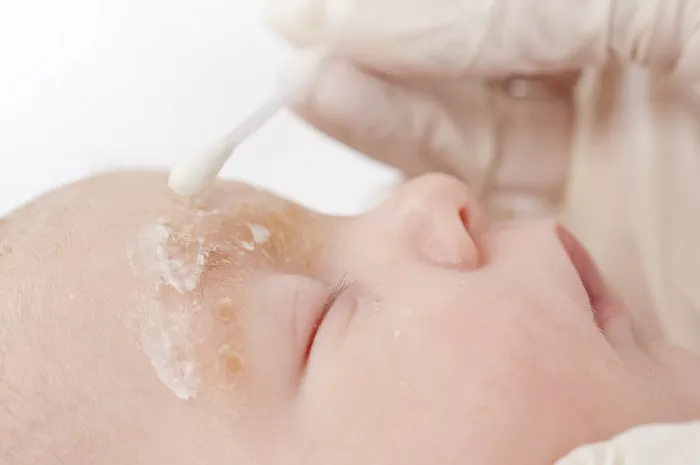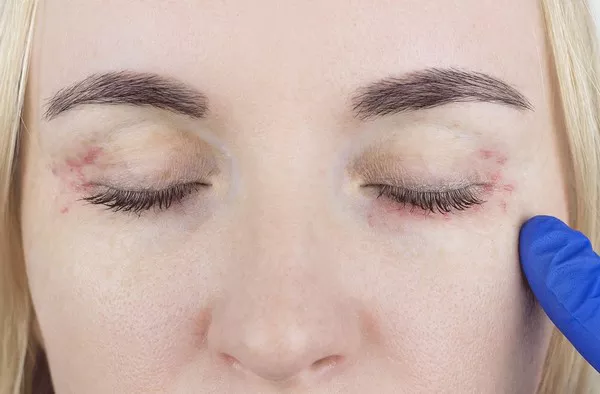Ear eczema, also known as ear dermatitis, is a condition where the skin inside and around the ear becomes inflamed, irritated, and itchy. It is a common skin problem that can affect people of all ages. This condition can occur in one or both ears and can vary in severity from mild to severe. While ear eczema may not be life-threatening, it can cause discomfort and disrupt daily activities. In this article, we will explore what ear eczema is, its causes, symptoms, treatment options, and tips for managing the condition.
Understanding Eczema
Eczema is a general term for a group of skin conditions that cause the skin to become inflamed, red, itchy, and irritated. There are different types of eczema, including atopic dermatitis, contact dermatitis, and seborrheic dermatitis. Ear eczema falls under the category of contact dermatitis or seborrheic dermatitis, depending on the cause and location of the irritation.
Eczema is commonly linked to the skin’s protective barrier not functioning properly. This allows irritants, allergens, and bacteria to penetrate the skin, causing inflammation. The skin in the ear area is sensitive, and when affected by eczema, it may become more vulnerable to these irritants.
Causes of Ear Eczema
Several factors can contribute to the development of ear eczema. The condition can be triggered by one or more of the following causes:
1. Allergic Reactions
One of the most common causes of ear eczema is an allergic reaction. The skin inside and around the ear can react to certain allergens, such as perfumes, lotions, soaps, or ear products like earrings or hearing aids. In some cases, even the material of earphones or earbuds can cause irritation, leading to eczema.
2. Skin Irritants
Harsh chemicals and environmental factors can also trigger eczema. Exposure to strong cleaning agents, chlorinated water, or pollutants can irritate the skin in and around the ears. Additionally, excessive moisture, such as sweat or water from swimming, can lead to skin irritation.
3. Seborrheic Dermatitis
Seborrheic dermatitis is a type of eczema that is often linked to an overgrowth of yeast on the skin. This condition can affect the scalp, face, and ears. It causes redness, flaking, and itching. The ear canal and the area behind the ears are particularly susceptible to seborrheic dermatitis, leading to ear eczema.
4. Atopic Dermatitis
Atopic dermatitis is a chronic condition that is linked to an overactive immune system. People with atopic dermatitis often experience flare-ups in response to stress, changes in temperature, or exposure to certain allergens. This type of eczema can affect the skin on the ears, causing inflammation and itching.
5. Infection
In some cases, ear eczema can be caused by a bacterial or fungal infection. The skin in the ear canal can become infected, leading to eczema-like symptoms. A fungal infection, such as athlete’s foot fungus, can sometimes spread to the ear, causing irritation and itching.
6. Genetics
Genetics play a significant role in the development of eczema. If someone in your family has a history of eczema, allergies, or asthma, you are more likely to develop the condition. Certain genetic factors may make your skin more prone to irritation and inflammation, leading to ear eczema.
Symptoms of Ear Eczema
Ear eczema can present with a variety of symptoms. The severity of these symptoms can vary depending on the individual and the underlying cause of the eczema. Some common symptoms include:
1. Itching
Itching is one of the most common symptoms of ear eczema. The skin inside and around the ear may feel intensely itchy, prompting the urge to scratch. Scratching can worsen the irritation and cause the skin to become damaged.
2. Redness and Inflammation
The affected skin may appear red, inflamed, or swollen. This is a result of the skin’s immune response to allergens, irritants, or infection. The inflammation can make the ear feel tender or sore to the touch.
3. Dryness and Flaking
Ear eczema can cause the skin to become dry and flaky. You may notice small patches of peeling skin or crusting around the ear. The dryness can sometimes lead to cracks in the skin, which can be painful and increase the risk of infection.
4. Fluid Discharge
In more severe cases, ear eczema can cause a discharge of fluid from the ear canal. This fluid may be clear, yellow, or even bloody. A discharge is often a sign of an infection or inflammation within the ear.
5. Pain or Sensitivity
Ear eczema can cause pain or sensitivity in the affected area. The ear may feel sore, especially when touched or during activities like chewing or talking. In some cases, the pain may be persistent or worsen with time.
6. Swelling
Swelling is another common symptom of ear eczema. The skin around the ear may appear puffy or inflamed. In some cases, the ear may become so swollen that it may feel blocked or uncomfortable.
7. Scabbing
As the skin heals, it may form scabs or crusts. These scabs can develop when the skin begins to dry out and repair itself. While scabbing is a natural part of the healing process, it can be uncomfortable and may increase the risk of infection if scratched.
Treatment for Ear Eczema
The treatment of ear eczema depends on the severity of the condition, the underlying cause, and individual factors. In many cases, a combination of at-home remedies and medical treatments can help alleviate symptoms and promote healing.
1. Topical Corticosteroids
One of the most common treatments for ear eczema is the use of topical corticosteroids. These creams or ointments help reduce inflammation and itching by calming the immune response. They should be applied sparingly to the affected area, as overuse can cause skin thinning.
2. Antifungal or Antibacterial Creams
If the eczema is caused by a fungal or bacterial infection, your doctor may prescribe antifungal or antibacterial creams to treat the infection. These medications help clear the infection and reduce symptoms like swelling and discharge.
3. Moisturizers
Keeping the skin around the ear moisturized is essential for managing ear eczema. Moisturizers help restore the skin’s natural barrier, preventing dryness and irritation. Choose a fragrance-free moisturizer that is gentle on the skin.
4. Antihistamines
If allergies are a trigger for your ear eczema, antihistamines can help reduce allergic reactions and relieve itching. These medications can be taken orally or in topical form. Over-the-counter antihistamines may provide relief, but in some cases, a doctor may recommend prescription-strength options.
5. Oral Steroids
In severe cases of ear eczema, your doctor may prescribe oral corticosteroids to help reduce inflammation. These medications are typically used for a short period to manage flare-ups.
6. Avoiding Triggers
Identifying and avoiding the triggers of your ear eczema is crucial for managing the condition. Keep track of what causes flare-ups, such as certain products, allergens, or environmental factors. Avoid exposure to these triggers whenever possible.
7. Ear Cleaning
Proper ear hygiene is important in managing ear eczema. Gently clean the outer ear with a soft cloth to remove any dirt or buildup. Avoid using cotton swabs inside the ear canal, as this can irritate the skin and make the eczema worse.
8. Warm Compress
Applying a warm compress to the affected ear can help soothe irritation and reduce swelling. The warmth can help promote healing and alleviate discomfort. Use a clean towel soaked in warm water, and gently apply it to the ear for a few minutes at a time.
9. Prescription Treatments
In some cases, your doctor may recommend prescription treatments such as topical calcineurin inhibitors, which help reduce inflammation without the side effects of steroids. These treatments can be especially helpful for people who need long-term management of ear eczema.
Preventing Ear Eczema
While it may not always be possible to prevent ear eczema, there are steps you can take to reduce the risk of flare-ups:
1. Avoid Scratching
Scratching the affected area can make the eczema worse and increase the risk of infection. Try to resist the urge to scratch, and keep your nails trimmed to prevent further damage.
2. Moisturize Regularly
Keep the skin around your ears well-moisturized to prevent dryness. Apply a fragrance-free moisturizer after showering or washing your face to lock in moisture.
3. Wear Hypoallergenic Products
If you are prone to ear eczema, choose hypoallergenic ear products, such as earrings, hearing aids, or earbuds. These items are less likely to cause irritation.
4. Keep Your Ears Dry
Excess moisture can trigger ear eczema. After swimming or showering, make sure to gently dry your ears. You can use a soft towel or a hairdryer on a low, cool setting to dry the area.
5. Use Gentle Skin Care Products
Avoid using harsh skin care products that can irritate the skin around the ears. Choose fragrance-free, gentle soaps and shampoos that are designed for sensitive skin.
6. Manage Allergies
If allergies are a trigger for your ear eczema, work with your doctor to manage your symptoms. This may involve taking allergy medications or avoiding known allergens.
Conclusion
Ear eczema is a common but manageable condition that affects the skin in and around the ears. It can cause itching, redness, dryness, and discomfort, but with proper treatment and care, the symptoms can be alleviated. If you experience persistent or severe symptoms, it is important to consult a healthcare professional for proper diagnosis and treatment. By avoiding triggers, using the right medications, and keeping the skin moisturized, most people with ear eczema can manage their condition effectively and enjoy a better quality of life.
Related topics

























